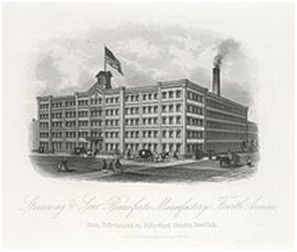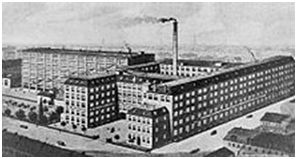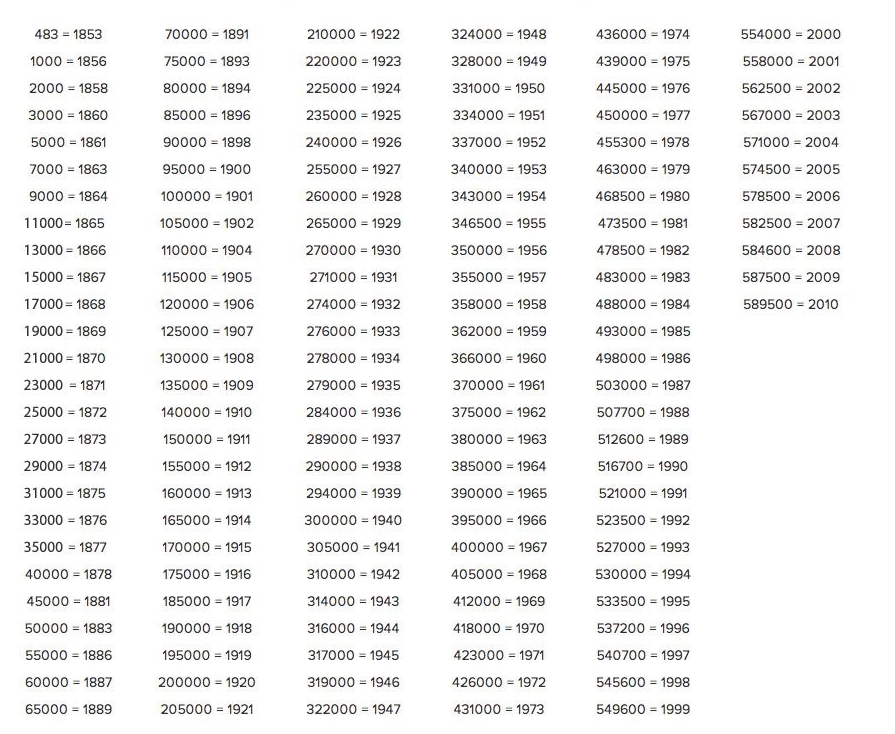PIANO CARE TIPS
Your piano is an investment and can bring you a lifetime of music and joy. To protect your investment, just about every piano manufacturer — from Kawai and Steinway to Yamaha and Baldwin –recommends that pianos be tuned 2 to 3 times a year (even if it’s not being played, it goes out-of-tune!) When a piano goes too long between tunings, it may need a Pitch Raise. It should also be regulated and voiced every few years depending on the playing conditions. (An out-of-regulation piano will wear out much faster than a properly regulated one.) Pianos should be kept at a constant, moderate temperature (away from outside walls, vents, and sunlight) and also be kept at a constant humidity level with a Humidity Control System.
Remember: Proper piano care is not expensive when spread over the lifetime of the piano–it is the lack of proper care that is expensive in the long run!
STEINWAY HISTORY: A BRIEF OVERVIEW
The Steinway – once called the “instrument of the immortals” – is considered by many to be the most pre-eminent of American pianos. It is also a symbol of “Old World” craftsmanship combined with technological innovation.
Founded in New York in 1853 by a German immigrant, the Steinway company quickly rose to prominence and has continued for five generations.
FOUNDER, HENRICH STEINWAY:
On February 15, 1797, Founder Henry E. Steinway was born Heinrich Engelhard Steinweg in what is now known as Germany. Around age 25, he began to work as a carpenter, and later he became an apprentice to an organ builder. He soon discovered his love for music and became an organ player in the church.
He started building instruments, though hidden in the kitchen of his house because of the strong rules of the guild. He started by building guitars and zithers, then in 1835 he made the first square piano, which he presented to his bride Juliane at their wedding. In 1836 he built his first grand piano.
Because of the unstable political climate following the revolutions of 1848 in the German states, Steinweg decided to leave the country. He emigrated from Braunschweig to New York City in 1850 with five of his sons, but before leaving he gave the company to his son, Christian Friedrich Theodor Steinweg, who remained in Germany, and continued making the Steinweg brand of pianos, partnering with Friedrich Grotrian, a piano dealer, from 1856 to 1865. Later in New York, Henrich anglicized his name to Henry E. Steinway. Steinway and his sons worked for other piano companies until they could establish their own production under the name of Steinway & Sons in 1853. Henrich and his wife, Juliane, had seven children: Albert, Charles, Theodor, Doretta, Henry, Jr., Wilhelmina and William.
STEINWAY & SONS:
In 1853, Heinrich Steinweg’s first workshop in America was in a small loft at the back of 85 Varick Street in the Manhattan district of New York City. The first piano made by Steinway & Sons was given the number 483 because Heinrich Steinweg had built 482 pianos in Germany. Number 483 was sold to a New York family for $500, and is now on display at the Städtisches Museum in Heinrich’s hometown of Seesen, Germany. It was not until 1864 that the family anglicized their name from Steinweg to Steinway.
By the 1860s, Steinway had built a new Manhattan factory at Park Avenue & 53rd Street, the present site of the Seagram Building, where it covered a whole block. With a workforce of 350 men, production increased from 500 to 1,800 pianos per year. The pianos themselves underwent numerous substantial improvements through innovations made both at the Steinway factory and elsewhere in the industry based on emerging engineering and scientific research, including developments in the understanding of acoustics. Almost half of the company’s 126 patented inventions were developed by the first and second generations of the Steinway family.
In 1865, C.F. Theodor Steinweg sold his share of his German Steinweg factory to his partner Wilhelm Grotrian (who later shortened the company name to Grotrian-Steinweg.) Theodor travelled to New York City to take over the leadership of the family firm due to the deaths of his brothers Henry and Charles.
Steinway’s factory in Manhattan, New York City, 1876
Around 1870-80, William Steinway (born Wilhelm Steinweg, a son of Heinrich Engelhard Steinweg) established a professional community, the company town Steinway Village, in what is now the Astoria section of Queens in New York City. Steinway Village was built as its own town, and included a new factory (still used today) with its own foundry and sawmill, houses for employees, kindergarten, lending library, post office, volunteer fire department and parks. Steinway Village later became part of Long Island City. Steinway Street, one of the major streets in the Astoria and Long Island City neighborhoods of Queens, is named after the company.
Steinway’s factory in Hamburg, Germany, 1915
To reach European customers who wanted Steinway pianos, and to avoid high European import taxes, William Steinway and C.F. Theodore Steinway established a new piano factory in the free German city of Hamburg in 1880. C.F. Theodore Steinway became the head of the German factory, and William Steinway went back to the factory in New York City. The Hamburg and New York City factories regularly exchanged experience about their patents and technique despite the large distance between them, and they continue to do so today. C.F. Theodore Steinway was a talented inventor who made many improvements in the construction of the piano. More than a third of Steinway’s patented inventions are under the name of C.F. Theodore Steinway, who died in 1889.
In 1890, Steinway received their first royal warrant, granted by Queen Victoria. The following year the patrons of Steinway included the Prince of Wales and other members of the monarchy and nobility. In subsequent years Steinway was granted royal and imperial warrants from the rulers of Italy, Norway, Persia, Portugal, Romania, Russia, Spain, Sweden and Turkey.
Steinway pianos have been recognized with numerous awards — receiving 35 gold medals from 1855 to 1862 — and has been granted 126 patents in piano making. Steinway pianos are handcrafted at the factories in New York City and Hamburg and according to Franz Liszt, Anton Rubinstein, and other high authorities, the Steinways have done more to advance the durability, action, and tone-quality of their instruments than any other makers of Europe or America.
Just a few prominent Steinway artists, past and present, include: Lang Lang, Diana Krall, Billy Joel, Keith Emerson, Keith Jarrett, Yuga Wang and “immortals” Irving Berlin, Duke Ellington, Franz Liszt, Cole Porter, Van Cliburn, George Gershwin, Vladamir Horowitz, Sergei Rachmaninoff, and Arthur Rubinstein.
STEINWAY & SONS – SELECTED HISTORICAL HIGHLIGHTS:
- 1836: Heinrich Engelhard Steinweg, a German cabinet and piano maker, builds his first piano in his kitchen. 482 more pianos are to follow within the next decade.
- 1850: Heinrich Engelhard Steinweg and his family emigrate to the United States.
- 1853: After changing the family name to “Steinway“, Henry Engelhard Steinway and his sons founded the company of Steinway & Sons in a Manhattan loft on Varick Street.
- 1866: Steinway & Sons opens the first Steinway Hall on 14th Street. With a main auditorium of 2,000 seats, it becomes New York City’s artistic and cultural center, housing the New York Philharmonic until Carnegie Hall opens in 1891.
- 1871: Henry Sr. dies and sons C.F. Theodore and William take over operations.
- 1880: Foundation of the Hamburg Steinway factory on Schanzenstraße.
- 1972: CBS Inc. buys Steinway & Sons, incorporates into the Columbia Group.
- 1985: CBS. Inc. sells the entire Musical Instruments Division, which also includes Steinway & Sons, to three American businessmen. The new holding company trades under the name Steinway Musical Properties.
- 1995: In May merger of the holding company of Steinway & Sons – the Steinway Musical Properties – and the Selmer Company, USA.
STEINWAY MODELS & SIZES
| MODEL | SIZE | YEAR INTRODUCED |
|---|---|---|
| S | 5′ 1” | 1936 |
| M | 5′ 7” | 1911 |
| L | 5′ 10 1/2” | 1923 |
| O | 5′ 10” | 1900 |
| A (Round tail) |
6′ 2” | 1878 |
| A (Square tail) |
6′ 2” | 1896 |
| A (“Stretch A3”) |
6′ 4 1/2” | 1913 |
| B | 6′ 10 1/2” | 1872 |
| C | 7′ 5” | 1884 |
| D | 8′ 10 3/4” | 1884 |






